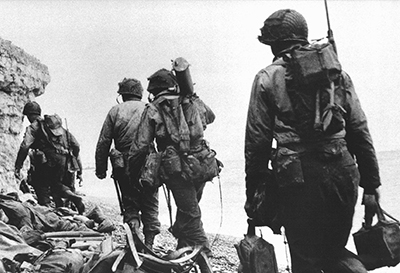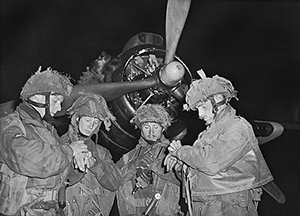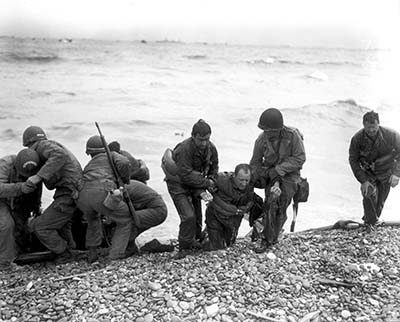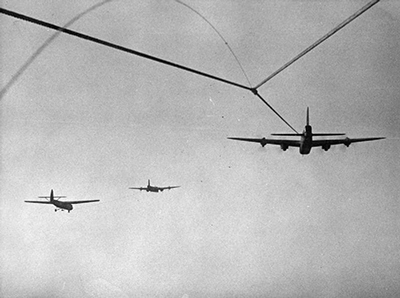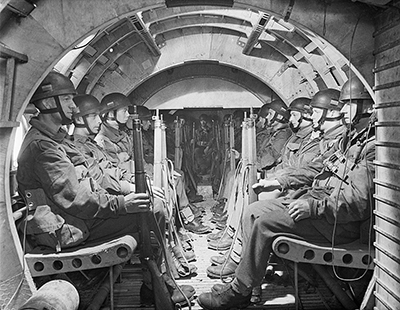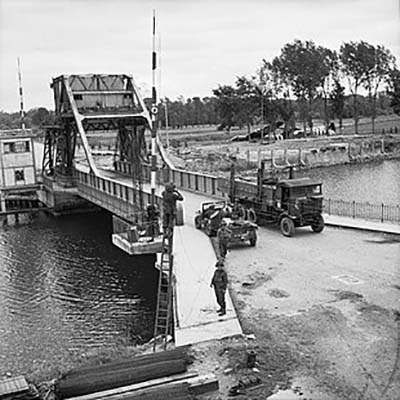The Boys of Pointe Du Hoc
&
The Ox & Bucks at the Pegasus Bridge
At each end of the D Day beaches, two small units of very brave men accomplished the almost impossible.
In Normandy the towering cliffs of the Pointe Du Hoc overlook Omaha beach, one of the two landing beaches for American forces on the morning of D Day, June 6th, 1944. On these heights Hitler’s army had built a stützpunkt—a fortified battery of six massive 115mm howitzers—capable of inflicting hideous damage on the Americans landing below them.
Forty miles to the east, at the far end of the long line of Allied beaches—Utah, Omaha, Juno, Gold, and Sword—two bridges across the Orne River and the Caen Canal offered the German 21st Panzer Division a side door through which to attack the vulnerable eastern flank of the British landing beach codenamed Sword.
If the invasion was to be successful, the stützpunkt must be silenced and the bridges must be captured and held against German counterattacks.
The task of assaulting the Pointe Du Hoc fell to the 2nd Ranger Battalion of the elite US Army Rangers under the command of Lt. Col. James Rudder, and the task of capturing the bridges fell to the men of D Company of the British Oxfordshire and Buckinghamshire Light Infantry, better known as the ‘Ox and Bucks,’ under the command of Major John Howard.
The Boys of Pointe Du Hoc
As dawn broke on the morning of D Day, the Rangers approached the beaches in a flotilla of ten small landing craft with four more craft carrying supplies. The English Channel was so stormy that one landing craft sunk, losing all its men, and a second was swamped and had to be abandoned. Two of the supply craft were lost with their cargos, including the ladders needed to scale the cliffs. Some of the landing craft were swept far off-course to Omaha beach.
The remainder of the Ranger force reached the beach below the cliffs under heavy enemy machine gun fire at 7 AM.
The Rangers held off repeated counterattacks throughout the day, receiving no reinforcements until the evening, when the Rangers who had been swept off-course to Omaha beach in the morning managed to fight their way through the enemy lines to rejoin their colleagues.
225 Rangers landed at the foot of the cliffs at Pointe Du Hoc. Of those, 77 were killed and 52 were wounded, a casualty rate of over 50%.
The Phrase ‘The Boys of Pointe Du Hoc’ was coined by President Reagan in a speech at Pointe Du Hoc in 1984. The speech was written by Peggy Noonan, now a long-time columnist for the Wall Street Journal.
The Ox & Bucks at the Pegasus Bridge
Even before the Rangers landed, 181 men of the Ox and Bucks had flown into Normandy in 6 Horsa gliders at midnight on the night before D Day.
The unpowered Airspeed Horsa glider was made almost entirely of wood—even the pilot’s control column was hand-carved! The glider was towed to the sky above its landing ground by a heavy transport aircraft or bomber, and then the tow rope was released and the Horsa glided down and landed. It was specifically designed to descend steeply so that it would stop in a short distance once it hit the ground.
The glider carried 15 soldiers and their equipment, sitting on benches facing each other.
Imagine sitting shoulder-to-shoulder in a small unlit wooden tube at night, and then descending steeply toward the ground the pilot could not see. Imagine the jar of impact, the bumping and lurching as the Horsa careened across the ground on its belly, and finally the jerking stop—perhaps on clear ground, but perhaps smashing into a tree or into a house or plunging into a river… all in pitch blackness.
The bridges were defended by the German 711th Infantry Division, with barbed wire, trenches, and sandbagged machine gun emplacements. The Ox and Bucks used grenades, Bren guns and Sten guns to take both bridges within fifteen minutes, completely surprising the enemy. The attackers lost only two men. This was one of history’s classic examples of a coup de main, the military term for a surprise attack.
Wrecked Horsa gliders can be seen just beyond the bridge having made a pinpoint landing–they were stopped by the bridge’s defensive barbed wire.
Approximately an hour later the Ox and Bucks repelled a German tank attack, destroying one Panzer V, and a further hour later they were reinforced by paratroopers of the 7th Paratroop Battalion at 3 AM. In the afternoon of D Day, after surviving several more attacks, the Ox & Bucks were relieved by commandos of the 1st Special Service Brigade, commanded by Lord Lovat, arriving from the landings on Sword beach. It is said in popular anecdote that Lovat apologized for arriving two-and-a-half-minutes late.
I do not know if any of the Boys of Pointe Du Hoc ever met any of the Ox & Bucks. What I do know is that these two groups, totaling just 400 men between them, took and held their targets under extremely hazardous conditions, thus making decisive contributions to the success of D Day and therefore to the freedoms we all enjoy today.



